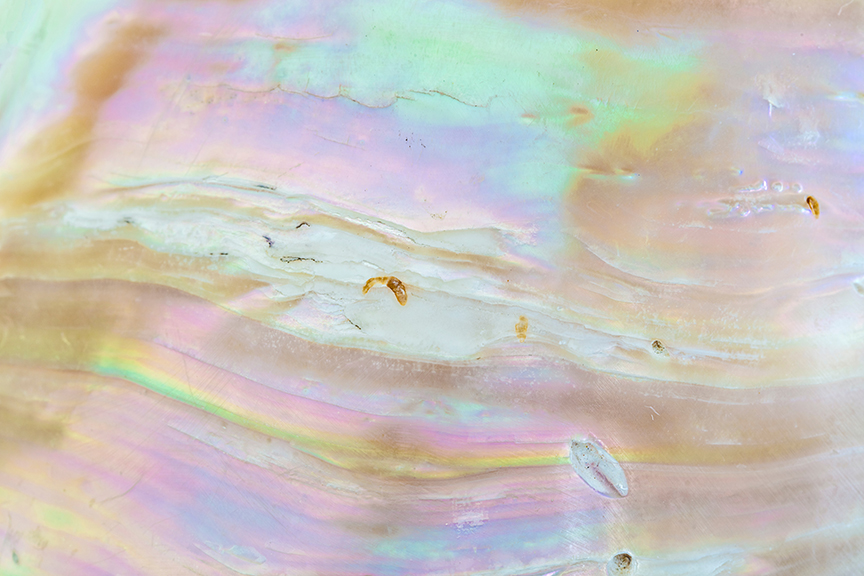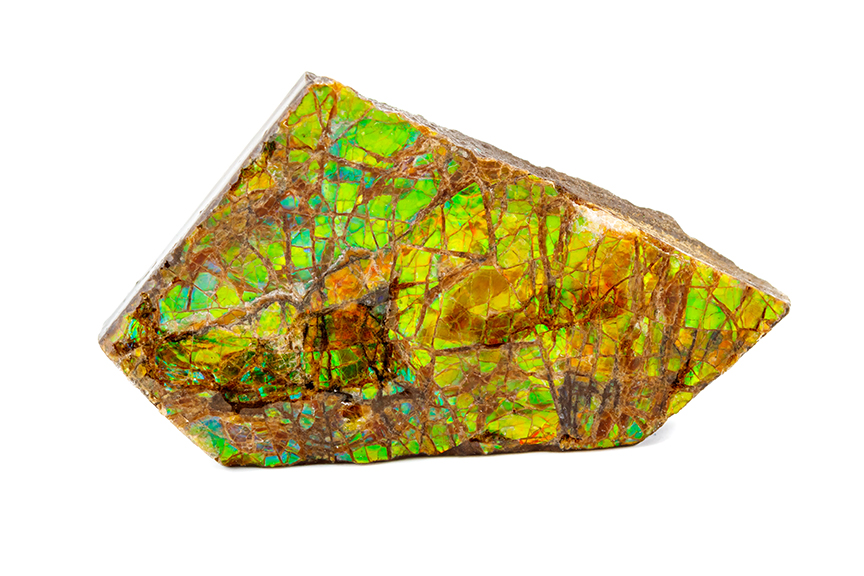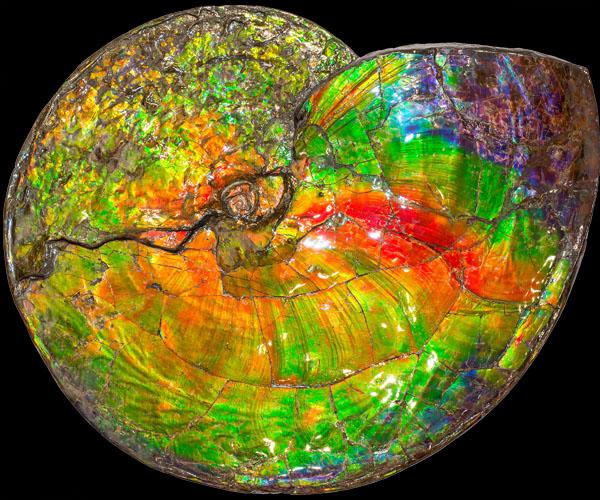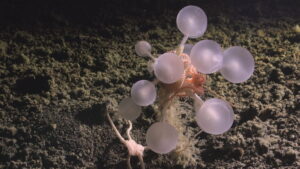Some fossils of long-extinct sea creatures display brilliant rainbow colors. Known as ammolite, these gems come from the fossilized shells of ammonites, squid-like marine animals that vanished with the dinosaurs. While other fossils are hues of browns and greys, many ammonites burst with greens and reds and purples and pinks.
Chemist Hiroaki Imai first spotted the beautiful fossils at a mineral fair in Japan. Intrigued, he and his research team launched a study to understand why these fossils are colorful.
Ammolite is composed of layers of the mineral aragonite, with tiny gaps of air between them. These gaps are only a few nanometers (a billionth of a meter) wide, but they reflect specific colors of light, depending on the thickness of the aragonite layers. All this color seems to start in the inner layer of the shells, which is made of nacre, commonly known as mother-of-pearl.

An iridescent mother-of-pearl shell. Photo: Shutterstock
Mother-of-pearl vs ammonite
Mother-of-pearl is made of thin, stacked plates of aragonite, separated by organic material. It occurs in many marine creatures, but they do not all share the iridescence of ammonite fossils. To understand what makes ammonites unique, Imai’s team started comparing ammonite fossils from around the world with shells from modern creatures such as abalone and nautilus.
All the shells showed the same general nacreous structure, with key differences. The aragonite layers were of different thicknesses, the gaps between them were of different sizes, and the organic material between the plates was different. This combination determines the exact colors we see.
The most vivid and colorful ammonites all came from a single location: the Bearpaw Formation in Alberta, Canada. The fossils found here showed particularly uniform layers and tiny air gaps, which seem to be key to their coloration.

Ammolite from Alberta. Photo: Shutterstock
“[They] are an art form created by living organisms and the Earth,” Imai told The New York Times.
The mystery didn’t end there. In the same formation, scientists found plenty of ammonites with no iridescence at all. They were just pale, creamy shells. Why some fossils preserve these perfect optical structures while others lose them is unknown. The researchers believe it might be due to subtle geological differences within the region. They hope to explore this question in the next phase of their work.

Ammolite. Photo: Shutterstock






